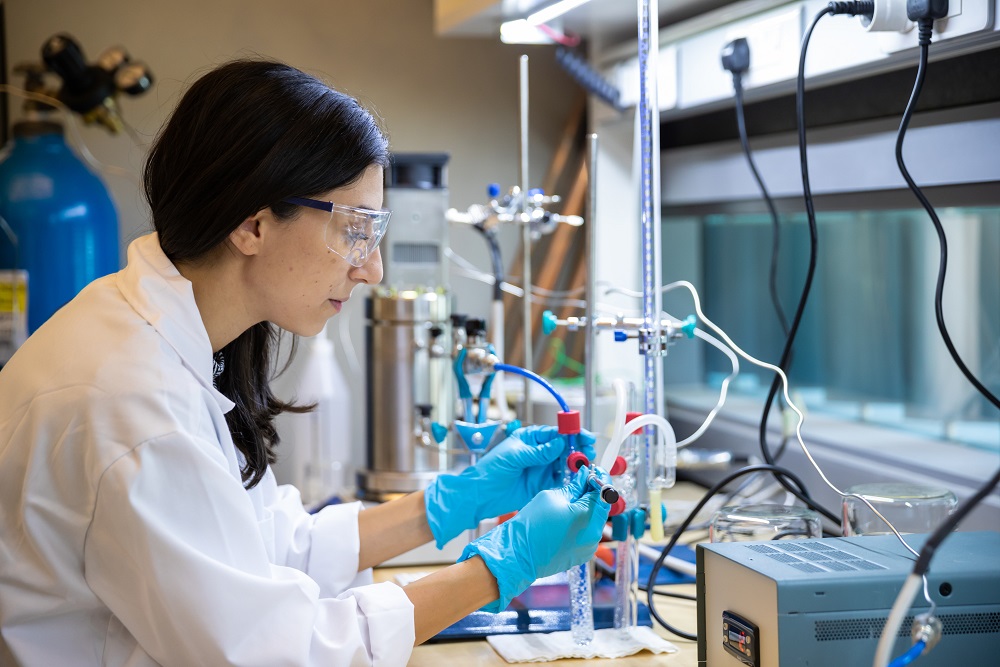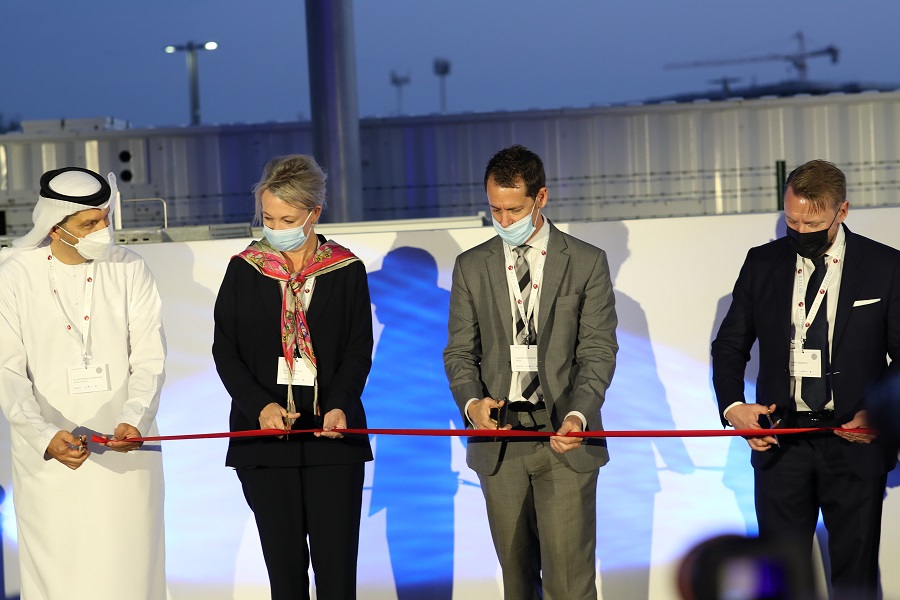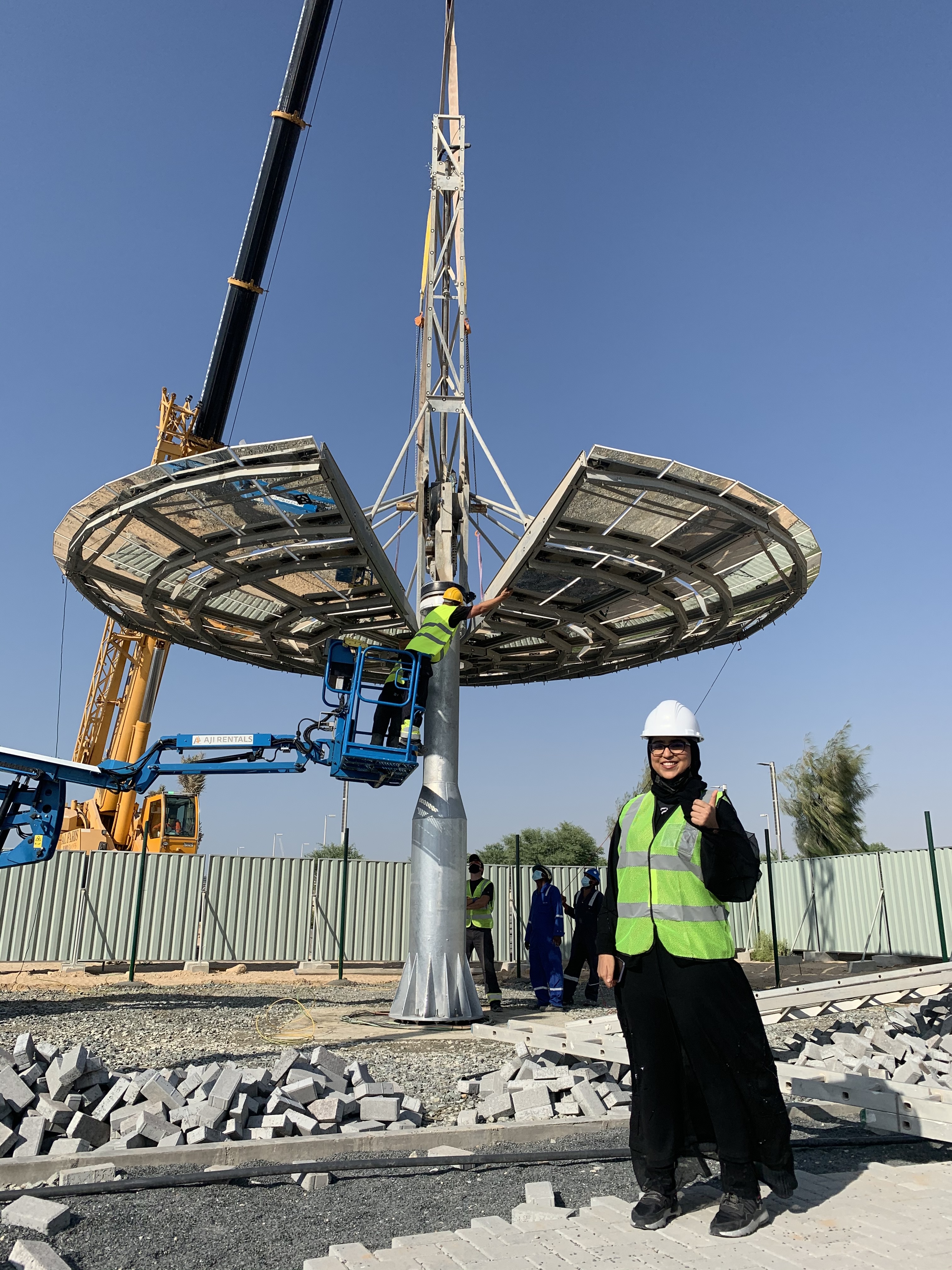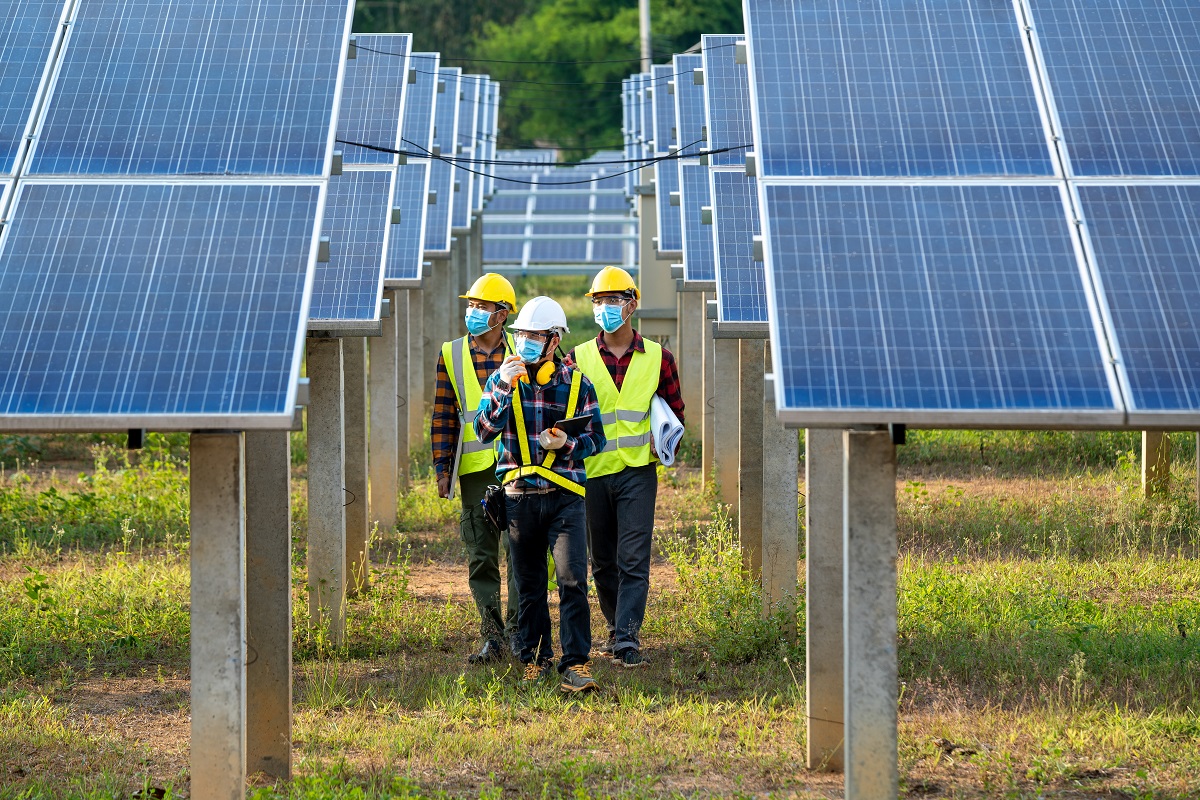Building Bridges: Opportunities Ahead in UAE-Japan Industry-Academia Collaboration on Hydrogen

Hydrogen is in high demand as an energy source but producing it can be difficult. A UAE-Japan research collaboration is looking to tackle these challenges and see the opportunities ahead.
Hydrogen could help tackle – critical energy challenges in the modern world, with its ability to provide a sustainable energy source to meet the demands for quality of life and economic growth, while avoiding emitting greenhouse gases into the atmosphere. Hydrogen use is expected to increase significantly in the near future in line with efforts to compensate the declining fossil fuel reserves and as the world turns to cleaner sources of energy.
Khalifa University’s Research and Innovation Center on CO2 and Hydrogen (RICH) is collaborating with the Institute of Energy Economics Japan (IEEJ) and Kyushu University on hydrogen projects in the UAE and Japan.
Collaboration between the UAE and Japan in the area of hydrogen began in 2017 with several bilateral meetings between academia, companies and government. In 2019, the first UAE-Japan Workshop on Hydrogen was held in Abu Dhabi with participants from UAE and Japanese industry and academia enjoying presentations, roundtable discussions, poster sessions and the exhibition of the Toyota Mirai Hydrogen FC Electric Vehicle. In 2020, a steering committee was created to define a roadmap and specific objectives and projects between IEEJ, Khalifa University, the Abu Dhabi National Oil Company (ADNOC), and the Abu Dhabi Department of Energy.
The low density of hydrogen made it a natural choice for one of its first practical uses—filling balloons and airships, but now, hydrogen can be used as a means of decarbonizing heavy industry; used as a zero-emission fuel for transportation, including trains, buses, trucks, and ships; provide a source of energy and heat for buildings; and store energy produced from renewable sources.
And there’s plenty of it. Hydrogen is found in the sun and most of the stars, and the planet Jupiter is composed mostly of hydrogen. On Earth, hydrogen is found in the greatest quantities as water. While it is present in the atmosphere, only tiny amounts of pure hydrogen persist since any hydrogen that does enter the atmosphere quickly escapes the Earth’s gravity into outer space.
Despite being the most abundant chemical substance in the universe, producing hydrogen is the tricky part. Most of the hydrogen produced today is from steam methane reforming, where natural gas is heated with steam to form syngas (a mixture of hydrogen and carbon monoxide), which is then separated to produce pure hydrogen. However, this process is energy intensive and comes with a large carbon footprint.
Considerable efforts have been made in recent years to find cleaner methods, mainly by water splitting using renewable sources of energy or by capturing the carbon dioxide produced by steam methane reforming.
Around 75 million tons of pure hydrogen are produced today, with 76 percent of that from natural gas and 23 percent from coal. Transitioning into low carbon energy with hydrogen is on the horizon. Hydrogen-derived synthetic fuels offer real potential for combining hydrogen with carbon dioxide to produce cleaner fuels for those traditionally ‘hard-to-reach’ sectors such as aviation and shipping, which have so far proved hard to convert to green energy.
Water splitting via electrolysis is expected to increase as surplus energy from renewables offers a low-cost way of providing the electricity needed. However, if all current dedicated hydrogen production were produced through water electrolysis, this would require more electricity than the annual generation of the European Union. It’s clear there are still several challenges to be solved.
There are various projects underway at RICH to meet these challenges. Solar-driven hydrogen production by water and hydrogen sulphide – a by-product of natural gas and oil processing – splitting is one such project.
Research shows that using 20 percent of the UAE’s land surface for solar plants producing green hydrogen for export would match the country’s current oil and gas revenue. Concurrently, using hydrogen to turn ammonia – another abundantly available resource – into a carbon-less fuel is also a focus for researchers in the center. Storing, processing, transporting and ultimately using these fuels requires an integrated infrastructure, which the researchers are also investigating via a systematic approach for optimal design and operation of a UAE hydrogen, carbon dioxide network.
With IEEJ, ADNOC, the Department of Energy, and Kyushu University, RICH is working to define a hydrogen smart town in Abu Dhabi in close relation to a more valuable oil and gas industry, while also developing a roadmap for research and development collaborations in low carbon hydrogen and hydrogen transportation.
As further opportunities in hydrogen production and use become apparent, the floor is open between the UAE and Japan to materialize them.
Jade Sterling
Science Writer
16 February 2021




